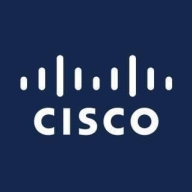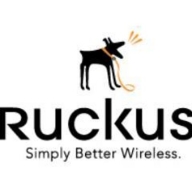

Cisco Meraki Wireless LAN and Ruckus Wireless are competitors in the wireless networking space. Based on the features and areas for improvement, Cisco Meraki excels in centralized cloud management ideal for smaller organizations, while Ruckus stands out in performance and coverage, suitable for high-density environments.
Features: Cisco Meraki offers centralized cloud management, ease of deployment, and advanced security with Layer 7 protection. Ruckus Wireless distinguishes itself with BeamFlex technology, robust outdoor performance, and advanced control capabilities.
Room for Improvement: Cisco Meraki could improve feature richness for complex environments, enhance logging and troubleshooting, and offer more flexible licensing. Ruckus Wireless could advance cloud management, improve documentation, and streamline pricing.
Ease of Deployment and Customer Service: Cisco Meraki is noted for easy deployment and comprehensive customer service facilitated by its cloud-managed solutions. Ruckus Wireless, with flexible deployment options, supports high-density applications and offers strong performance-focused support.
Pricing and ROI: Cisco Meraki is perceived as more costly due to its licensing model but offers ROI through management ease. Ruckus Wireless justifies its premium pricing with superior coverage and reduced infrastructure needs, ensuring valuable ROI in its strong performance and coverage efficiency.
I believe that in the coming years, it would be real value for the money.
I would rate Cisco support a 10, as the response time and process via the dashboard are easy, and response times are always within the SLA.
It would be better if the SLA of technical support was less than four hours.
I have contacted Ruckus support through our managed services vendor, but the responses have been delayed, possibly due to the vendor.
I have communicated with Ruckus Wireless technical support directly for all technical issues.
Meraki is not scalable enough since it straightforwardly maps its products to segmented specifications.
With the Ruckus R1 Cloud, I just need to put it into the venue, and it will automatically sync up and configure itself.
We have experienced many instances where we have experienced a lag in our network, and I am not sure if it is due to their devices or our network.
Stability is not an issue for me because it comes with Cisco's proven manufacturer quality.
The most important improvement needed is to eliminate the limitation of uplinks.
Some of the newer models of the Cisco Meraki Wireless LAN access point have encompassed the new wireless protocols and increased the strength of their antennas.
The current reporting is limited to 30 days, and it would be helpful if there was an option to extend it to one year.
Sometimes it happens when I see the number of users increasing on one access point, which slows down a little bit, especially when we are having online meetings and teams are communicating over the internet.
Cisco Meraki Wireless LAN is on par with other devices in that category, offering competitive pricing.
The pricing of Cisco Meraki Wireless LAN is not competitive enough for the SMB market compared to other brands.
My experience with the pricing of Cisco Meraki Wireless LAN is that it is competitive with other providers offering paid subscriptions.
Regarding the pricing and licensing of Ruckus Wireless, it's a bit expensive compared to other solutions available in Pakistan.
Ruckus Wireless is quite economical compared to Meraki or Cisco Umbrella APs.
Cisco Meraki Wireless LAN has helped optimize network traffic very effectively, as we do prioritization for streaming and web conferencing apps, resulting in a clear, visible improvement in performance.
It also manages security clients and switches, providing a single dashboard to manage multiple network infrastructures.
The ability to program all access points from the Cisco Meraki Wireless LAN dashboard, view the status of all of them, and examine the individual devices connected to each access point is very valuable.
Ruckus Wireless has helped improve my organization's connectivity overall because I asked my team to design in the mesh protocol with the layout diagram so that we can have more areas covered with the common details.
The most valuable feature of Ruckus Wireless is its AI capability, which automatically scales up and down the coverage areas.
| Product | Market Share (%) |
|---|---|
| Ruckus Wireless | 13.5% |
| Cisco Meraki Wireless LAN | 11.1% |
| Other | 75.4% |


| Company Size | Count |
|---|---|
| Small Business | 69 |
| Midsize Enterprise | 26 |
| Large Enterprise | 31 |
| Company Size | Count |
|---|---|
| Small Business | 69 |
| Midsize Enterprise | 21 |
| Large Enterprise | 26 |
Ruckus Wireless is part of Ruckus Networks/Commscope and provides reliable wireless network solutions and services to large venues, schools, hotels, hospitals, malls, and public spaces (and more) worldwide.
Wireless access is an integral necessary part of today’s modern, fast-paced lifestyle. It is essential that dependable, safe wireless capabilities be available in most of today’s largely populated public spaces. Ruckus Wireless is the trusted industry leader in assisting organizations of all sizes to provide wireless access throughout their locations, both inside their physical structures and adjacent open outdoor areas.
Ruckus Wireless empowers users to design and create a wireless network across their organizational space to ensure that wireless coverage is available consistently to anyone who needs it. Ruckus can handle anything from homes and small to medium-sized businesses to hospitals, college campuses, airports, malls, stadiums and more. Ruckus also has excellent options for outdoor wireless networks. Many users choose Ruckus Wireless for broad extensive outdoor use. The solution offers excellent durable outdoor access points and a very robust, super fast, reliable Wi-Fi. Each and every access point is very powerful, and the outdoor access points can be very easily disguised to keep the network secure.
Another strong point is that Ruckus technology is based on frequencies. If there is ever any type of wireless interference, Ruckus Wireless can change frequency automatically so there are never any interruptions. Users also have the option to block outside access points and signals that may interfere with their network and make their network the only one that people can see within the network. Users can additionally whitelist certain networks if desired.
Ruckus uses the latest next-gen Wi-Fi, Wi-Fi 6, ensuring that more devices can be handled with greater speed and continuity. With Ruckus, users have great control over network traffic. They can also allocate the amount of bandwidth network users are granted based on their status - eg., guest, corporate, etc. - and give users priority on the network based on their status. Ruckus also has mesh and beamforming capabilities, which are recognized as a valued feature for many users.
Ruckus Wireless is robust, extremely reliable, very easy to deploy, and offers amazing coverage and rock solid connectivity. It is very easy to add additional access points across the network. Ruckus Wireless is very easy to use and manage using an app on any mobile device.
Reviews from Real Users
A Director Engineering & New Business at a comms service provider says Ruckus “provides superior coverage and is very dependable”
Sintayehu A., Director Of Information Communication Technology at Dire Dawa University, relates that "Ruckus Wireless supports the most recent technologies. We can trace every individual and what kind of traffic they're using on our campus. It is very helpful."
Philip S., Independent Consultant - Wireless, says, "The solution is very stable. I've worked with it at a hospital before, where we deployed it all over the hospital. It worked everywhere and continuously worked flawlessly."
We monitor all Wireless LAN reviews to prevent fraudulent reviews and keep review quality high. We do not post reviews by company employees or direct competitors. We validate each review for authenticity via cross-reference with LinkedIn, and personal follow-up with the reviewer when necessary.